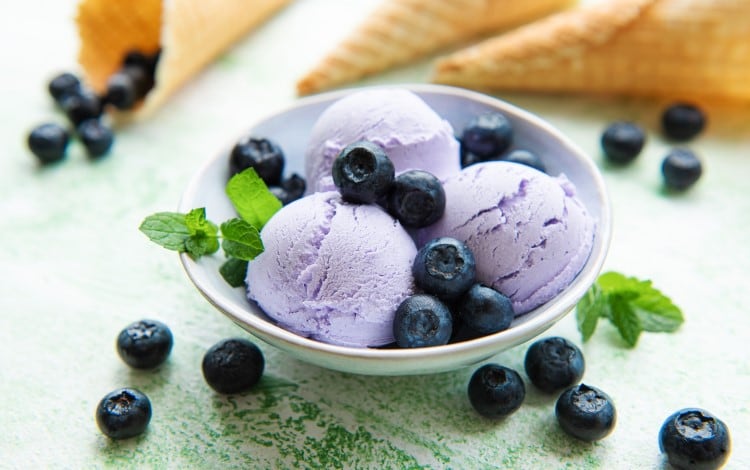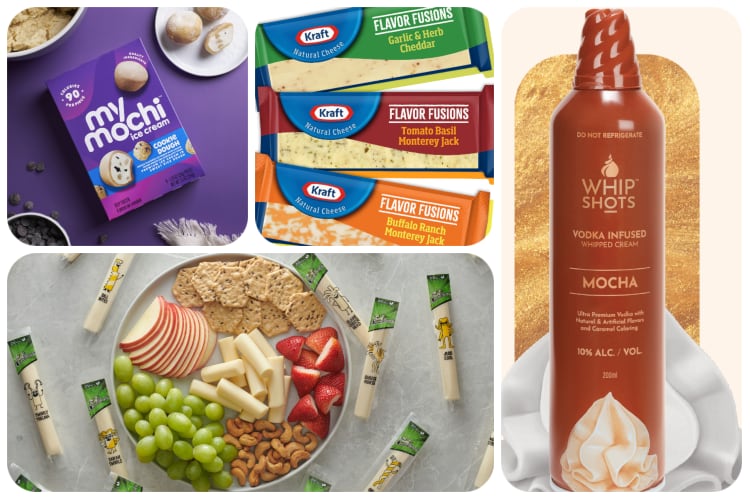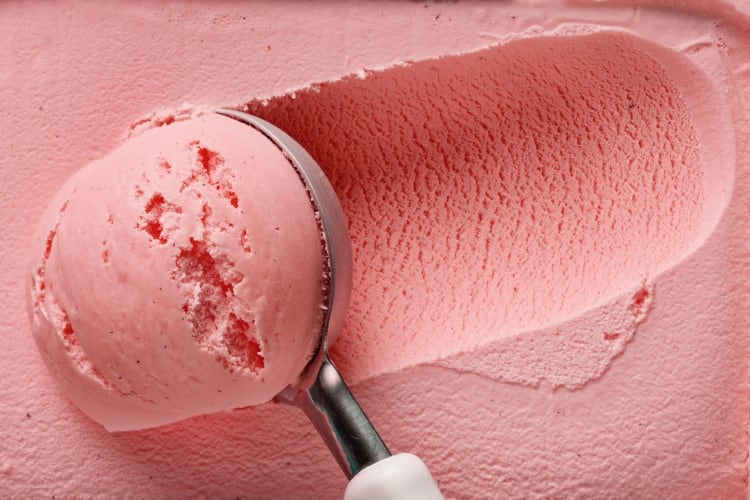The UK out-of-home ice cream market is back on a growth trajectory, having recovered from the slump it experienced during the pandemic.
According to Kantar data commissioned by Nestlé Professional UK, the category’s value dipped under £328,000 year-on-year in 2021, only to recover and make gains of almost 59% a year later. In 2023, the value of OOH ice cream grew again, by 16.2%, reaching a valuation of more than £605m. Volumes also grew 7% as the number of OOH purchases increased, faster than the entire OOH food and drink market.
According to Mintel consumer research, 9 in 10 UK consumers enjoyed an ice cream between July and October 2023, and almost the same number did so in Germany.
More than 274 million ice creams were purchased in 2023 by more than 21.6 million people in the UK, Kantar estimates.
Meanwhile, total gelato consumption in Europe grew by 4.7% according to CREST-Circana, with 2.2 billion gelatos sold in Italy, Spain, France, Germany and the UK.
How are consumers enjoying ice cream?
Nestlé Professional’s desserts category lead Danielle Griffiths says that ice cream’s versatility as a treat at any time of the day and its popularity as a sociable consumption occasion has fuelled the category’s growth. The company’s research suggests that more than half of OOH purchases take place in the afternoon (56%) compared to evenings (15%) and lunchtimes (11%).
“There is an opportunity for operators to drive more ice cream consumption in those channels that are leading total OOH afternoon consumption,” she explained, adding that these channels are retail convenience (accounting for 31% of purchases), coffee shops (14%) and quick-service restaurants (8%).
In the UK, consumers are also more
likely to buy ice cream when they are part of a group, be it friends, family or work colleagues. According to the data, group consumption is increasing over ‘solo’ occasions, with 65% of all consumers opting to join others versus 35% preferring to go ‘solo’.
Most out-of-home consumption happens outdoors, the research suggests, with almost 42% of UK consumers treating ice cream as the ultimate on-the-go treat.
This is followed by leisure and dessert cafes (11.4%), fast food restaurants (9.5%), travel e.g. train stations (9.3%) and the workplace (6.4%).
Of those who prefer to have ice cream as takeaway, the majority (52%) prefer it from a cone, while those who enjoy the dessert at a venue like it scooped from a bowl.
Meanwhile, Mintel reports that ice cream is still primarily viewed as comfort food, with 9 in 10 US shoppers agreeing that eating ice cream brings them joy – but other trends, such as demand for healthy eating and functional ingredients, are also driving consumption.
What are the category’s key growth drivers?
- Personalization
Nestlé Professional’s research puts personalization as one of the key sales drivers for OOH ice cream consumption.
“Toppings provide a great opportunity to delight consumers and to charge a premium,” Griffiths said. “It allows for personalization without adding too much complexity in the kitchen. It also gives consumers those Instagrammable moments to show off their choice.”
Stocking consumers’ favorite flavors and toppings is key to tapping into this trend. According to Nestlé Professional, UK consumers’ favorite ice cream toppings include flavored sauces, chocolate pieces, sprinkles, nuts and fudge/caramel pieces, while the top five ice cream flavors are vanilla, chocolat
e, strawberry, mint chocolate chip, and salted caramel.
Griffiths added that encouraging consumers to choose their own topping mixes and flavor combinations is another way to give their customers the personalized options they crave.
“The pick’n’mix idea has long been a favorite when it comes to confectionery and is gathering traction in the ice cream category,” she explained. “It created an opportunity for consumers to interact more with family and friends and create their perfect personalized ice cream dessert.”

- Brand collaborations
A popular trend in the snacking and beverage space, brand partnerships can enhance credibility and generate excitement among consumers.
As for ice cream, offering branded confectionery items as optional additions can increase consumer confidence and drive OOH ice cream sales.
According to Nestlé Professional, more than half (57%) of consumers say it's important to them to see a brand they recognize and trust on a menu. For more than a third (36%), seeing a specific brand listed on a menu provides a sense of familiarity and comfort, while 29% say that the presence of a brand in a venue fosters trust.
Overall, 63% of UK consumers would be likely to purchase a branded ice cream, though that differs based on the channel. For example, in quick-service restaurants brands play a very important role.
Nestlé Professional’s Danielle Griffiths said that consumers embrace the idea of choosing brands they know and trust, even if they have to pay a premium. “They seek the comfort of familiarity, and they value the reliability that brands bring, particularly in those important moments of social connection with friends and family,” he explained.
- Healthy options & functionality
Healthy eating is another trend driver. According to Mintel, increased consumer focus on healthy eating is a key reason behind the scrutiny on foods high in sugar and fat content; similarly, APAC consumers are demanding better-for-you ingredients and formulations.
Nestlé Professional’s research also suggests that embracing healthier options could present opportunities for increased out-of-home consumption.
In particular, 13% of British consumers would be willing to pay more for an ice cream if it offers improved nutrition or caters to specific diets, such as low-sugar, vegan or gluten-free. In addition, 36% of Brits link the provision of healthier menu choices to restaurant’s sustainability, which in itself is important to 2 in 5 consumers (41%) when choosing where to eat out.
According to Mintel, however, it’s unlikely that consumers would ever see ice cream as a healthy food – but leveraging functional ingredients can potentially appeal to those who seek out healthier dessert options. Mintel has seen a 10% increase in new ice cream products that contain functional claims between 2021-2023, and the market is expected to grow further.
To tap into this trend, ice cream brands can offer high-protein options or take inspiration from the energy drinks sector, Mintel suggests.
Frozen yogurt: a functional, low-calorie ice cream option

Nestlé Professional’s research showed that 9% of UK consumers placed frozen yogurt in their top 3 ice cream choices. This may not look like a lot, but it was not far off from other popular options, including gelato (15%) and sorbet (10%).
Frozen yogurt was also the preference of more consumers than the likes of rolled ice cream (8%) and mochi balls (6%). The popularity of the dairy-based dessert was higher in Northern Ireland, where 19% of consumer placed it into their top 3 OOH ice cream choices.
Younger consumers favor frozen yogurt more than older ones, with 15% of 25-34 and 14% of 16-24 year-olds stating it was one of their top three choices. In comparison, just 4% of Brits aged over 55 picked it.
Frozen yogurt is typically lower in fat, calories and lactose than traditional dairy ice cream and may contain gut-friendly bacteria, particularly if formulators have opted to additionally enrich their ice cream with probiotics or fiber.
- Exciting flavors
Enjoyment remains the single biggest reason why consumers reach out for an ice cream, and appealing through flavors is crucial here.
Mintel reports that sweet flavor profile are dominating global launces followed by fruit and vegetable flavors, then herbs and spices; bakery; savory; and floral.
In APAC in particular, floral flavors are gaining interest, with half of Thai consumers aged 25-34 stating they are interested in such,” Mintel reports. Non-traditional flavor profiles including savory are also driving interest, Mintel found, with an increase of more than 50% in product launches since 2021.
Nostalgia is also an influencing factor here, with 8 in 10 Germans stating they enjoy flavors they grew up with. A similar sentiment is shared by British and Indian consumers with regards to nostalgia-inducing flavors.
BONUS CONTENT: European gelato makers' 2024 flavor innovations
European gelato makers are increasingly embracing unusual flavors as they aim to thrill consumers this summer. according to market intelligence carried out by the Italian Exhibition Group.
Giancarlo Timballo, owner of the Gelateria Fiordilatte gelato parlour, will be creating new flavours - including raspberry and rosemary gelato - by drawing on local traditions and working with local products.
Eugenio Morrone, a master gelato maker with two gelato parlours in Rome, has created a carrot, tangerine and lemon gelato, in homage to Italian tennis player Jannik Sinner.
Dario Fontanella, founder of a gelato parlour in Mannheim, Germany, is offering white chocolate gelato with asparagus, typical of the Baden-Württemberg region. New flavours include bergamot with curry and wasabi.




